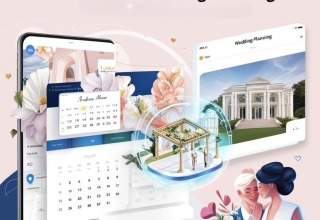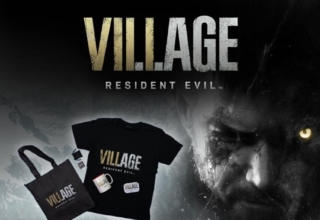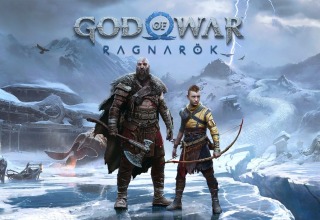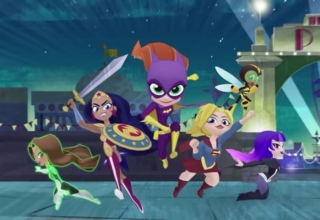For generations, wedding planners were considered the cornerstone of a stress-free celebration. They managed vendors, handled logistics, and turned a couple’s vision into reality. Today, that role is being redefined. The rise of digital wedding platforms, artificial intelligence, and cloud-based tools has quietly disrupted the industry, empowering couples to plan their own weddings with professional precision, often at a fraction of the cost.
The modern wedding no longer requires a single coordinator with a clipboard. It can now be managed entirely through a phone screen. This shift reflects not just a change in technology, but a change in mindset.
From Luxury to Accessibility
For decades, hiring a wedding planner was a luxury reserved for those with large budgets. Independent planners often charged thousands of dollars for full-service packages, putting them out of reach for many couples. Digital platforms have changed that equation.
New tools now make professional-level planning accessible to anyone. Apps and online systems, like Say I do, allow couples to build guest lists, manage budgets, send invitations, and track RSVPs without needing an intermediary. Features that once required an experienced planner, such as seating arrangements, vendor coordination, or scheduling, are now available as drag-and-drop tools or automated workflows.
These platforms are designed for ease of use, allowing couples to plan efficiently and make informed decisions in real time. The result is a democratisation of wedding planning. What was once exclusive is now accessible, streamlined, and data-driven.
AI Takes the Role of Personal Assistant
Artificial intelligence is rapidly becoming the invisible assistant behind many modern weddings. AI-powered tools can now suggest timelines, generate checklists based on wedding dates, and even recommend local vendors that match a couple’s budget and style.
Machine learning algorithms analyse preferences and past trends to offer hyper-personalised recommendations. For example, an AI engine might identify venues that fit within a couple’s price range, estimate catering quantities based on guest counts, or suggest ceremony times based on historical weather data.
Generative AI has also entered the creative side of wedding planning. It can help couples write personalised vows, design digital invitations, and produce mood boards that align with their aesthetic. This level of personalisation was once only achievable with the guidance of a professional planner.
The advantage of AI is scalability. Unlike human planners who can only manage a few weddings at once, AI systems can support thousands of couples simultaneously, offering guidance without emotional bias or scheduling constraints.
Collaborative Planning in Real Time
One of the biggest advantages of digital platforms is collaboration. Couples, families, and vendors can now communicate and plan together in real time through shared dashboards. Tasks can be assigned, progress can be tracked, and updates can be seen instantly by everyone involved.
Cloud-based systems eliminate the confusion of outdated spreadsheets or lost paperwork. Payments, contracts, and vendor information are securely stored and accessible at any time. For couples planning destination weddings or coordinating across time zones, this digital connectivity has become indispensable.
Even traditional wedding planners are adapting to this shift. Many now use digital platforms themselves, combining human expertise with online tools to offer hybrid planning packages. Rather than resisting the change, some professionals are embracing it to reach a wider audience and modernise their services.
The End of Paperwork and Endless Emails
Traditional wedding planning often relied on manual communication, long email threads, phone calls, and physical contracts. Digital platforms have replaced that with automation.
Guest management is now handled through wedding websites, where attendees can RSVP, select meal preferences, and view schedules. Automatic reminders and status updates reduce the administrative burden for both couples and vendors.
Contracts, invoices, and deposits can be managed digitally, with secure payment integrations that provide transparency and accountability. This reduces the risk of miscommunication, late payments, or lost documentation. The entire process becomes faster, cleaner, and more reliable.
Data-Driven Decision Making
One of the more subtle transformations brought about by technology is the use of data analytics. Digital platforms collect information from thousands of weddings, allowing them to provide insights into spending trends, vendor reliability, and guest behaviour.
Couples can now make data-informed choices, from determining how much food to order based on attendance rates to identifying which types of venues are most likely to stay within budget. For vendors, this data is equally valuable. It allows them to understand market demand and adjust pricing and offerings accordingly.
The integration of data not only improves efficiency but also reduces waste, aligning the industry more closely with sustainability goals.
Cost and Control
Perhaps the most appealing aspect of digital wedding planning is control. Traditional planners manage budgets, but digital systems give couples full visibility into where every dollar goes. Automated expense tracking helps prevent overspending and ensures transparency.
The financial savings are significant. While traditional planners can cost anywhere from 10 to 15 percent of the total wedding budget, most digital tools operate on subscription or freemium models. Couples can access core planning functions for free or upgrade for premium features at a modest cost.
This affordability has made professional-quality wedding planning accessible to younger generations who prioritise cost efficiency and digital convenience over formality.
Challenges and Limitations
Despite its advantages, digital planning is not without its drawbacks. Technology cannot fully replicate the intuition, emotional intelligence, or crisis management skills of an experienced planner. Unexpected issues, from vendor cancellations to bad weather, often require a human touch.
There is also the question of digital fatigue. Constant notifications and decision-making can make planning feel transactional rather than emotional. For some couples, outsourcing logistics to a human planner still provides peace of mind and allows them to focus on the experience rather than the process.
Still, these challenges are less about technology’s shortcomings and more about finding balance. Many couples now choose a hybrid model: using digital tools for organisation while hiring coordinators for day-of management.
A New Era of Empowerment
The shift toward digital wedding planning reflects a broader cultural movement toward autonomy and accessibility. Couples today want flexibility, transparency, and creative control – values that align perfectly with digital tools.
The role of the traditional planner is evolving, not disappearing. The future likely belongs to hybrid professionals who combine personal expertise with digital efficiency.
As technology continues to innovate, weddings will become even more seamless, sustainable, and personalised. But no matter how advanced the tools become, one truth will remain: the most important part of a wedding is not how it is planned, but the people it brings together.





















